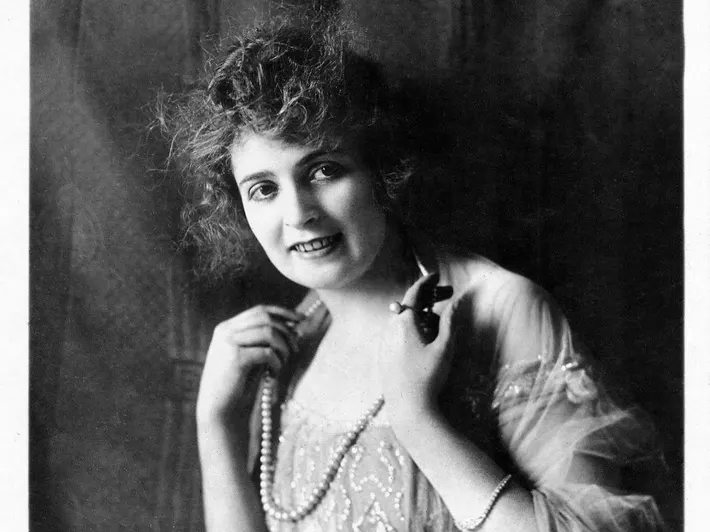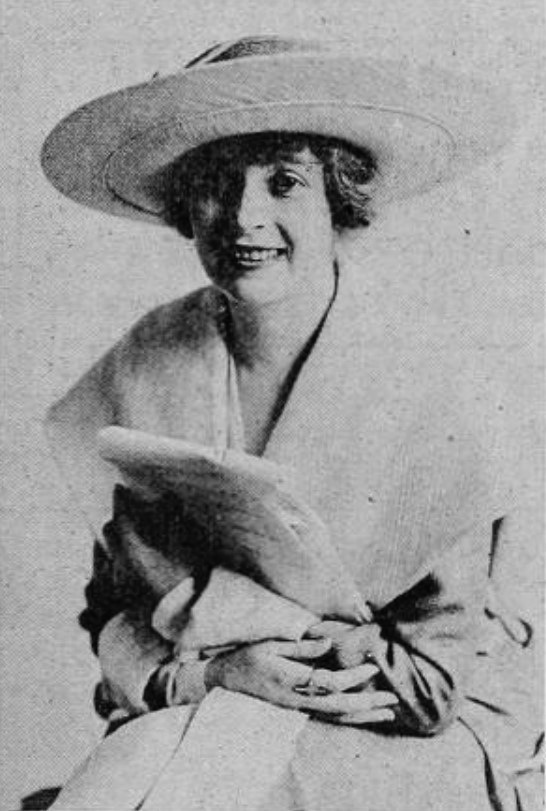In the early days of Hollywood, Myrtle Gonzalez stood out as a captivating beauty, making a lasting impact on the growing film world. Her journey from silent films to stardom tells an interesting story about how Hollywood started. In a time when movies were just starting, Gonzalez’s charm and fame added a special part to the early cinema tale.
Myrtle’s path to stardom was truly extraordinary, her story unfolds against the backdrop of early Hollywood, marking her as a trailblazer in the burgeoning world of cinema.
In this article, we explore the early life of Myrtle Gonzalez and the factors that set her apart in Hollywood’s formative years. Discovering her journey from silent films to stardom, we delve into the challenges she faced and the tragic turn of events that marked her life, leaving an enduring impact on the cinematic landscape and showcasing her resilience in the face of adversity.
Myrtle Gonzalez: Early Life and Family

Myrtle Gonzalez, recognized as the “First Latin American Movie Star,” played a pioneering role in the formative era of Hollywood. She was born on September 28, 1891, in Los Angeles, California, to Mexican immigrant parents.
She was the youngest of five kids. Her dad worked as a carpenter, and her mom took care of the home. Living in the lively city of Los Angeles, Myrtle experienced various cultures and languages from a young age. Her family resided in a diverse neighborhood, allowing her to pick up Spanish from her parents and English from her school friends.
When Myrtle was 14, her life took a turn after encountering a traveling vaudeville troupe at her school. Captivated by the stage, she persuaded her parents to let her become an assistant in the troupe. This ignited her love for acting, and she realized her dream was to make it her career.
Start of Myrtle’s Career

Myrtle began acting in small theaters in Los Angeles, practicing and getting better at acting. She also learned how to dance, becoming good at ballet and flamenco. In 1911, when she was 20, Myrtle got her first part in a movie called “The Immigrant,” directed by D.W. Griffith.
It was a small role, but it was the start of her successful career in Hollywood. In the following years, Myrtle starred in many silent films like “The Little American” (1917) with Mary Pickford.
Emergence as a Silent Film Star

Myrtle Gonzalez, also called “The Virgin of the Silver Screen,” was a Mexican-American actress who became famous in the early 1900s for her great acting in silent movies. Even though she began with small parts and there weren’t many chances for Hispanic actors, Myrtle’s talent and determination helped her become one of the most wanted actresses of her time.
In 1913, Myrtle started her movie journey with the short film “Giving Them Fits.” Even though it was a small part, it kicked off a brilliant career lasting over two decades. She became famous for her emotive eyes and skill in showing feelings without speaking. This brought her bigger roles in movies like “Love’s Forgiveness” (1915) and “The Silent Witness” (1917).
Significant contributions to the film industry
During her career, Gonzalez displayed her talent in various films, leaving a lasting impact on silent cinema. Movies like “For the Peace of Bear Valley” (1915), “The Cup of Life” (1915), and “Human Stuff” (1920) showcased her acting skills and on-screen charisma, solidifying her reputation as a remarkable presence in the world of silent films.
Spirit of entrepreneurship and lasting impact
Myrtle Gonzalez, beyond her acting skills, was a true trailblazer. Not only a talented actress, she delved into film production, a rare move for actresses of her time. Her entrepreneurial spirit, ambition, and determination set her apart, paving the way for women in the film industry. Myrtle’s legacy as a pioneer in early Hollywood endures, marking her as a symbol of empowerment and resilience for generations to come.
Untimely exit and lasting influence
Despite her ascending stardom and promising career, tragedy struck when Myrtle Gonzalez’s life was abruptly cut short at the age of 27 in 1918 during the Spanish influenza pandemic. Her untimely demise was a profound loss for Hollywood, robbing the industry of a rising talent and charismatic star.
The sadness echoed through the film world, leaving a void and an enduring sense of what might have been.
Enduring Impact and Remembering
Myrtle Gonzalez’s legacy endures in the films she starred in and the mark she left during her short but remarkable career. As both an actress and an early female entrepreneur in Hollywood, her contributions remain a lasting inspiration for generations to come. Her story stands as proof of cinema’s evolution and the influential role played by pioneering women in shaping the industry’s history.
Final Words
To conclude, Myrtle Gonzalez’s radiant presence, remarkable talent, and trailblazing spirit have indelibly shaped Hollywood’s early history. Her legacy, woven into the cinematic fabric, stands as a cherished testament to her talent, resilience, and pioneering role in the evolution of the silver screen.
In the annals of film history, Gonzalez remains a luminous figure whose impact continues to resonate, symbolizing the transformative spirit of early Hollywood.
FAQS
Who was Myrtle Gonzalez?
Myrtle Gonzalez, born in 1891, was a pioneering Mexican-American actress known as the “First Latin American Movie Star” who made a significant impact in the early days of Hollywood.
What were Myrtle Gonzalez’s notable films?
Myrtle gained fame in silent films like “The Little American” (1917) and “Love’s Forgiveness” (1915), showcasing her talent and earning her the nickname “The Virgin of the Silver Screen.”
What is Myrtle Gonzalez’s lasting legacy?
Myrtle Gonzalez’s legacy endures as a trailblazer in early Hollywood, not only for her acting prowess but also for her rare venture into film production, symbolizing empowerment and resilience for women in the film industry.

